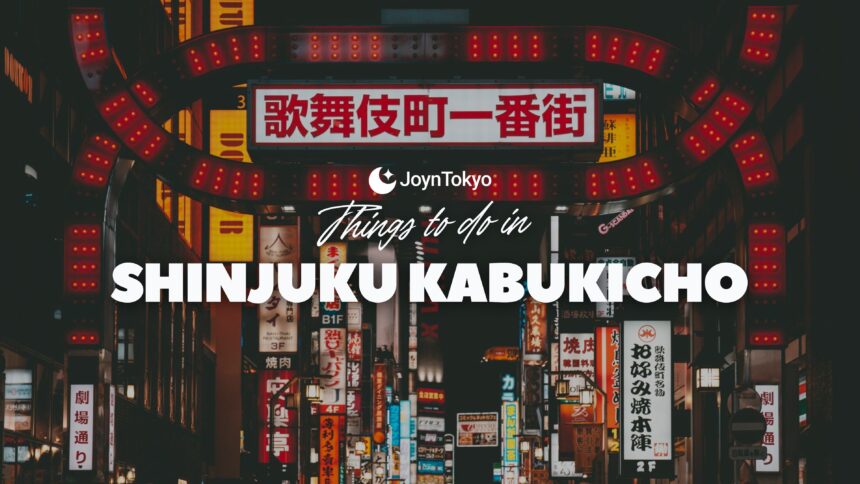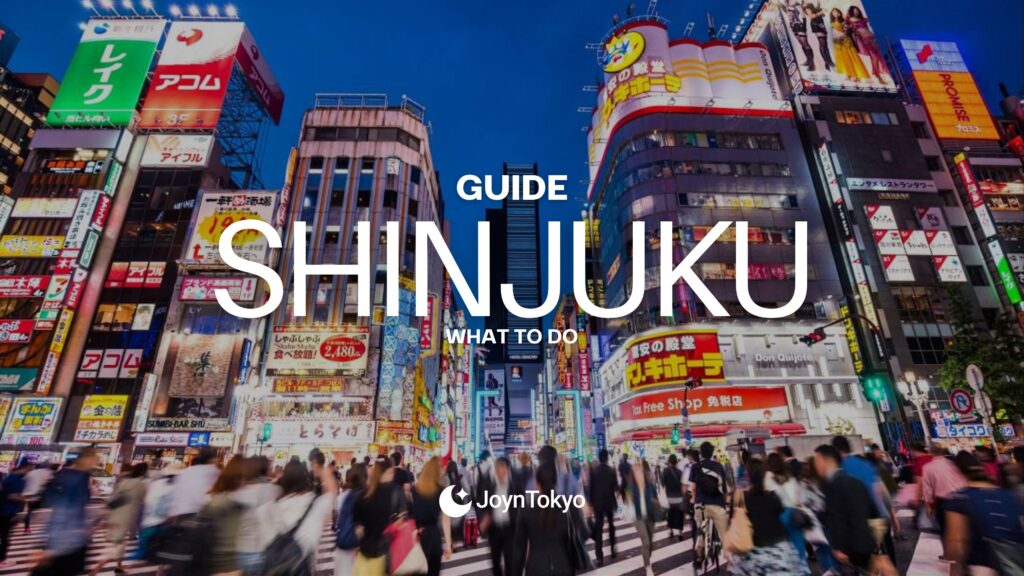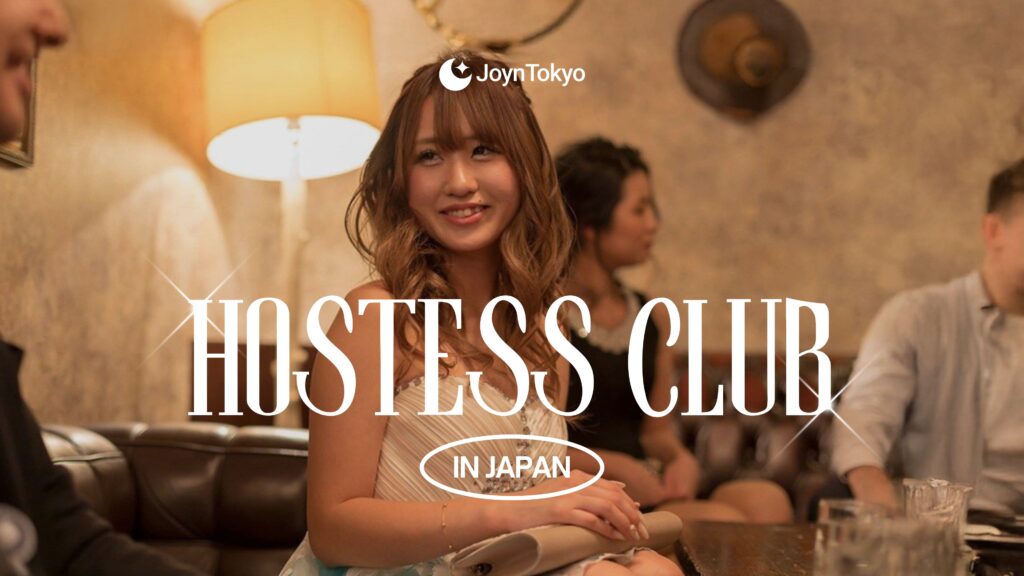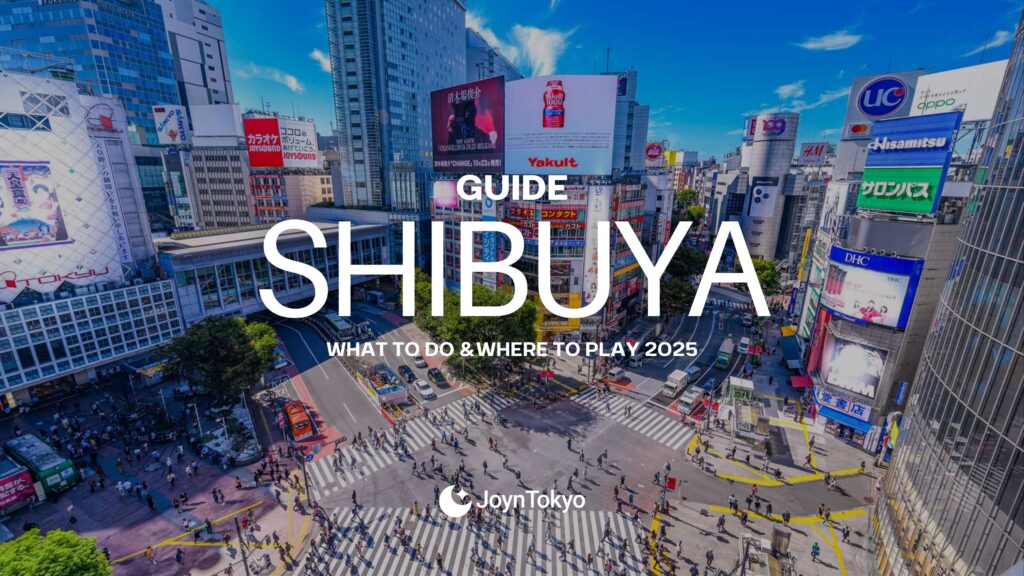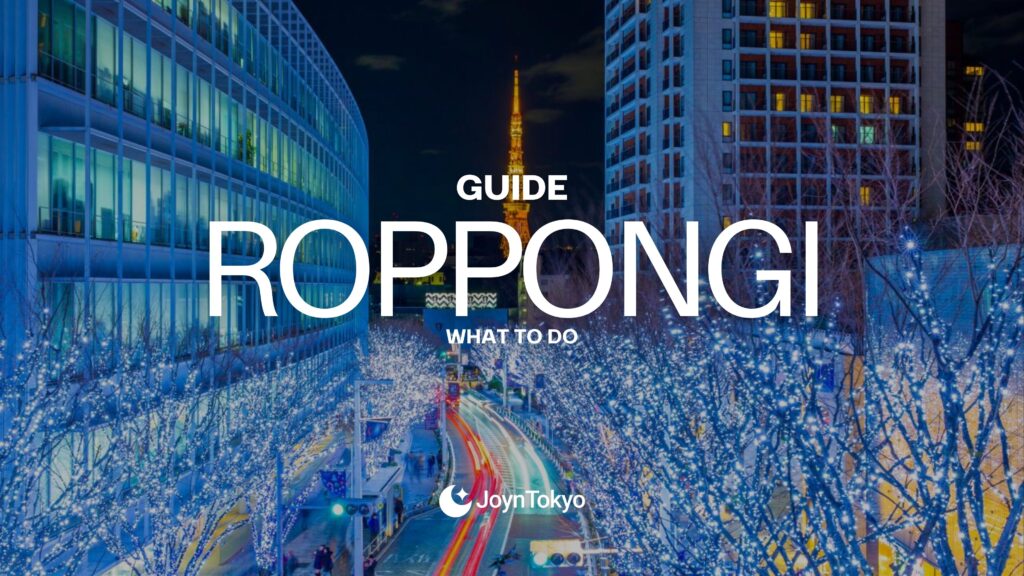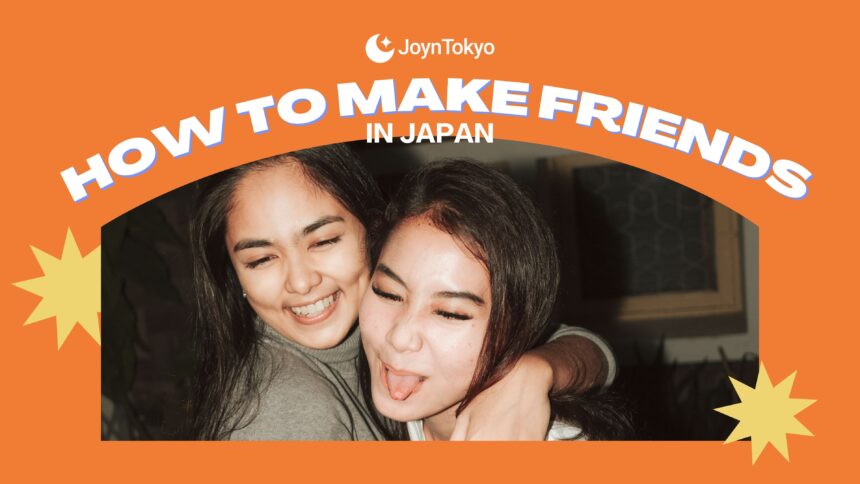Tokyo, as Japan’s capital and most populous city, is the nation’s number one tourist destination: if you want to find something, you can almost always find it in Tokyo. This also goes for thrills of a somewhat illicit nature.
To be frank up front: as sex work is, at best, legally dubious in Japan, so there will be no discussion of how to obtain it in this guide: indeed, Tokyo’s red light district is, despite its name, far less open about such affairs as in some other cities. However, if it’s drink and company you desire, you could do worse than a trip to Shinjuku. So, let’s watch our wallets and check it out together!
Where Is Tokyo’s Red Light District?
Tokyo has a few areas that could be considered “red light districts,” but by far the most famous (or infamous, depending on one’s perspective) is the Kabukicho area of Shinjuku. It is easily accessed from Shinjuku station, where signs will guide you to the East Exit or Central East Exit, where it is a simple matter of crossing the road and walking under the bright red gate.
But, hey, hold up, how did this area get its rep? And how did it get its name, even? Let us educate you!
Read More
The History Behind Kabukicho
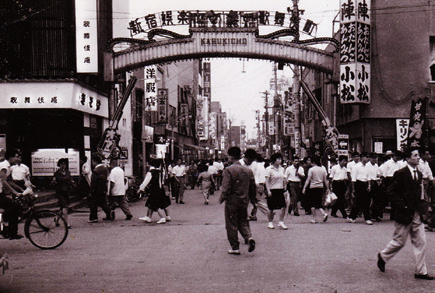
Perhaps somewhat fitting for a location known its dubious reputation, for much of its history, the area now known as Kabukicho was a swamp. During the early 20th century, it became a residential area, and one populated by people from overseas, mainly Korean-Japanese and Chinese-Japanese residents.
Origin of the Name “Kabukicho”
Following the fire bombing of Tokyo in the Second World War, much of the land and the buildings that had been built on the land were destroyed. As the city was being rebuilt, plans were drawn up to create a large, unrivaled Kabuki theater that would attract people to the area, revitalizing its local economy. This is where it got the name “Kabukicho,” or “Kabuki Town.” However, due to financial difficulties, the theater was never made: but the name stuck.
Rise of Kabukicho’s Nightlife
Given its pre-war origins as a place for foreign residents, who were often discriminated against and so had to find less salubrious means of attracting money, it became home to the precursors of modern love hotels, and alongside this, so grew a sex industry, which was legal until 1956.
However, the reputation that the area had, as well as a relatively hands-off approach from the police for decades meant that, to one degree or another, some less than legal activities continued, and the surrounds also became something of a late-night theme park for adults, with bars, love hotels, and hostess clubs thriving.
However, in the early years of the 21st Century, the local government began to enforce the laws that were on the books, in anticipation of more foreign guests — efforts that were redoubled for the then-anticipated 2020 Olympic Games. However, Kabukicho has retained a lot of its character — for both good and ill.
What You’ll Find in Kabukicho
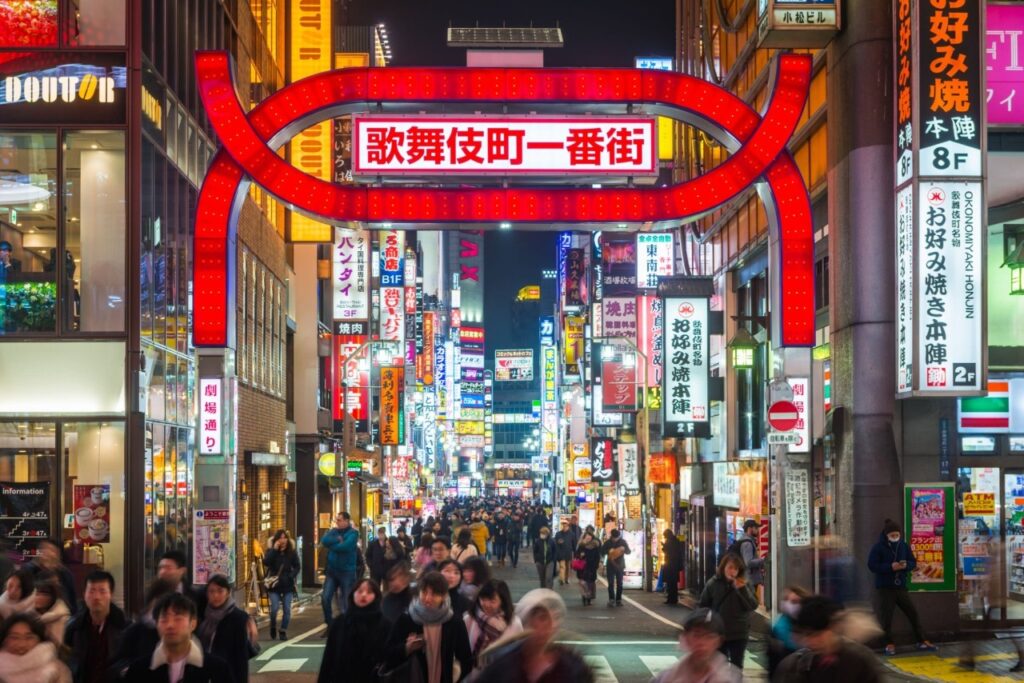
Kabukicho is the definition of an entertainment district. As soon as you arrive, you’ll be almost overwhelmed by the choices of bars and restaurants. While you could spend a week in the town that never sleeps (眠らない街/Nemuranaimachi) and never exhaust all it has to offer, here are a few things you can expect.
Izakaya Alleys and Hidden Bars
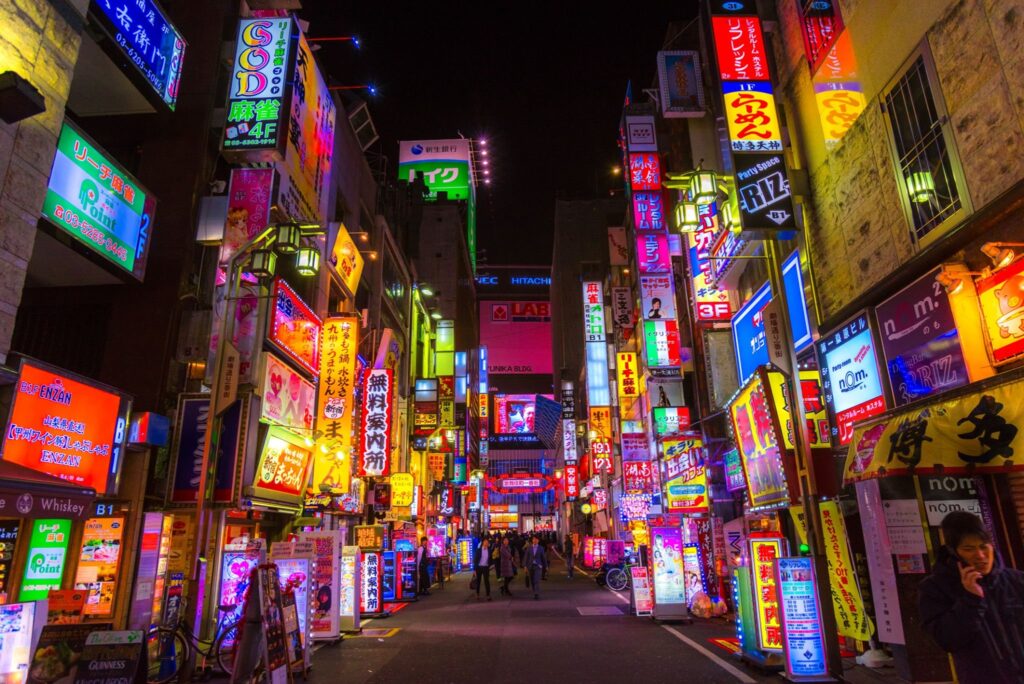
The most famous of Kabukicho’s backstreets filled with small Japanese pubs, called izakaya, is Golden Gai. A relatively small lattice-work of six streets lit by red lanterns, and is notable not only for a place to drink with Tokyo businessmen who are de-stressing after a long day, but also as a glimpse into the Tokyo of just a few decades ago. While much of the surrounds have been continually renovated and redeveloped, Golden Gai still has the architecture and vibes of the Showa era.
Themed Entertainment and Nightlife
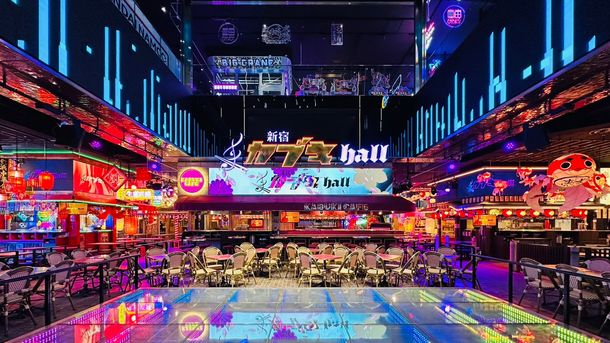
While there are countless regular bars and pubs to find in Kabukicho, it is also a great place to go to find a drink in a place with a specific theme and vibe. Some of our recommendations include Deathmatch in Hell, a B-movie and heavy-metal themed bar for anyone who misses the 80s; Emily with Paper Moon, a “catgirl” maid cafe/bar; and Animeholic, an anime-themed karaoke bar that attracts locals and tourists alike.
Host and Hostess Clubs
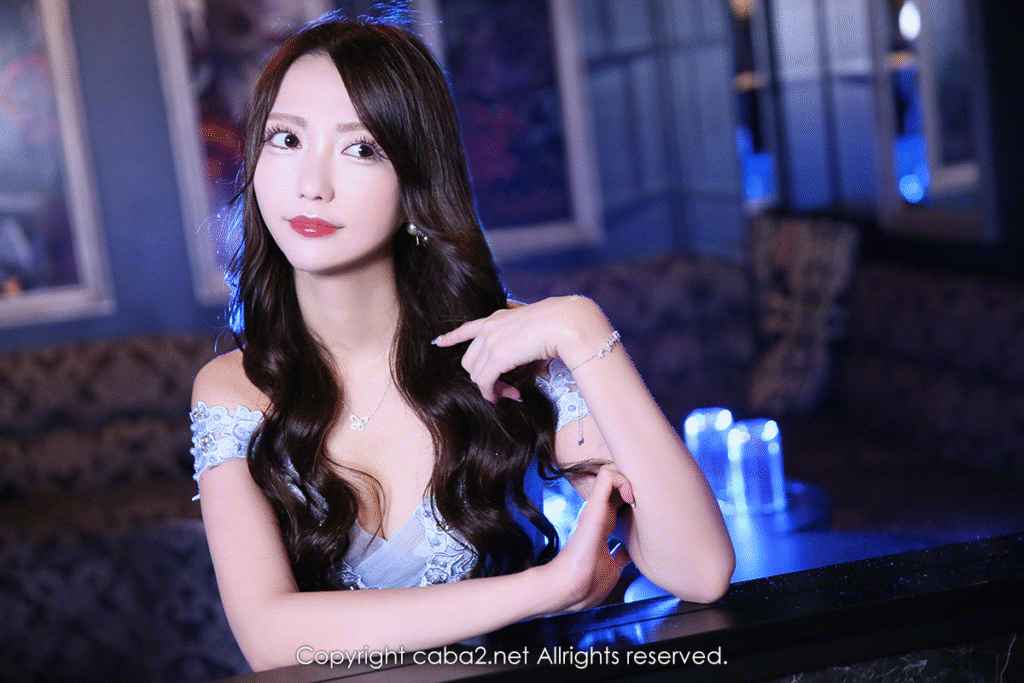
For anyone happy and willing to pay a little extra for company, Kabukicho is also home to a number of hostess and host clubs. These are bars where you are kept company by a hostess or host, and can enjoy their company. Be aware that there will likely be an entry fee, that the drinks are more expensive, and that you will also be paying for your companion’s drinks!
Read More
Safety Tips
Calling Kabukicho dangerous is, to some extent, stretching things: the first time I had to go, I remarked to a friend that I was worried, because it is the sketchiest place in Tokyo. He laughed at me, remarking, “yeah, it is. But it’s still Tokyo.”
Anyone acting sensibly should have little trouble enjoying Kabukicho. However, there are a few things that one should keep in mind:
- As a rule, one shouldn’t listen to barkers. Despite how good the deals may sound, there is often a catch.
- This goes double for anyone recommending an izakaya on the second floor or higher: sometimes you get scammed, and not being on street level makes it harder to run.
- In the event that a young lady does approach you for a “good time,” DO NOT accept, as you could end up in major trouble, both personally and legally.
- In a new bar, ALWAYS keep an eye on your drink — quintuple this advice if you are a woman.
Other Red Light Areas in Tokyo
While Kabukicho is the most well known of Tokyo’s red light districts, there are other areas that have similar bars and fun nightlife. Roppongi is one such place, and is well known for the number of international patrons that frequent its bars. The north side of Ikebukuro is also well known for its nightlife options, and diverse dining options. Hyakunincho in Shin-Okubo, Murayamacho in Shibuya, and the east side of Akabane also “enjoy” similar reputations.
There you have it! Kabukicho can be a lot of fun, but remember to keep your wits about you. As long as you don’t go around flashing cash or falling for anything that a tout with pretty eyes tells you, you should be able to have a great time in this historic part of town.

